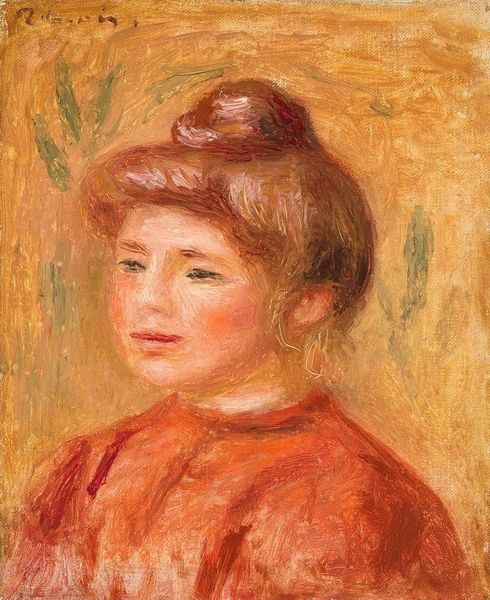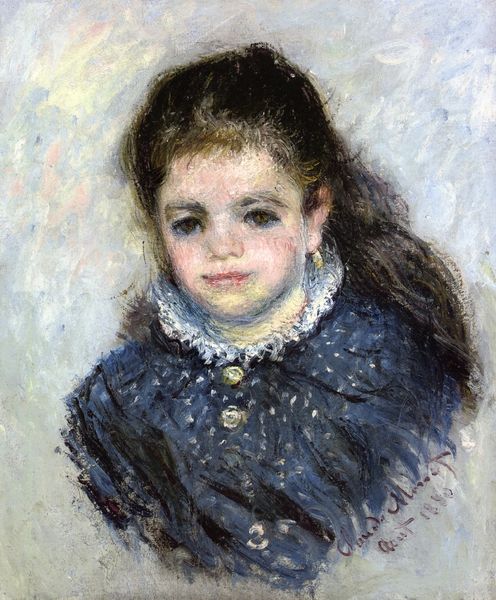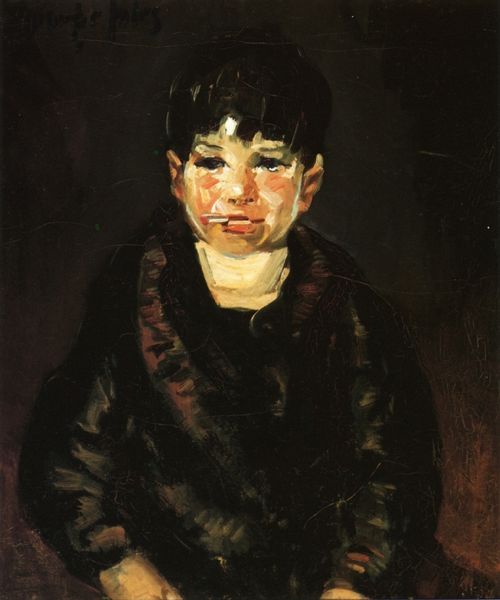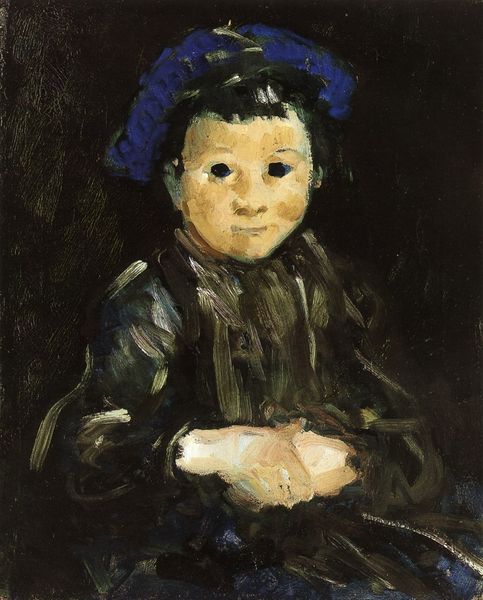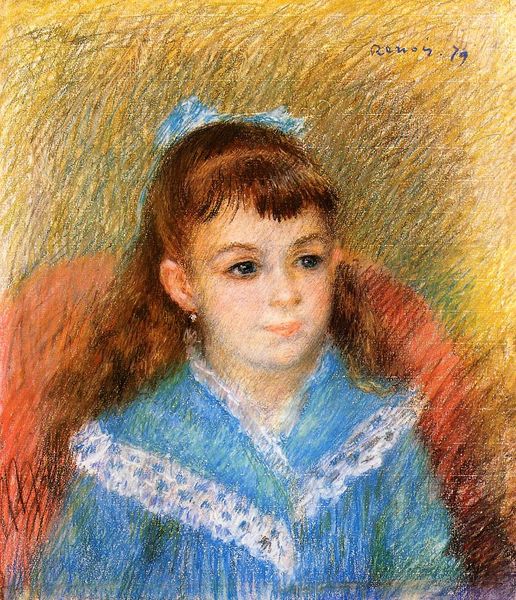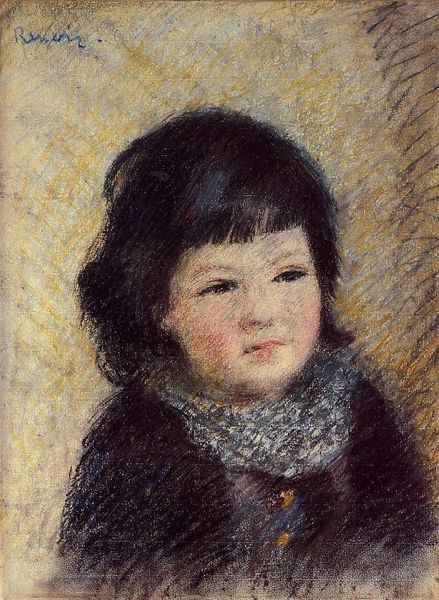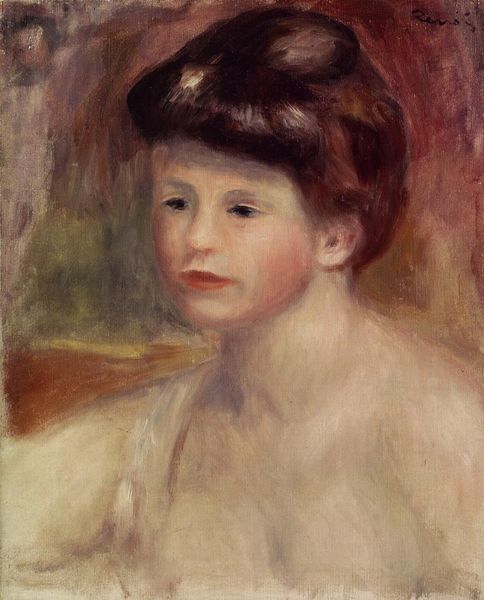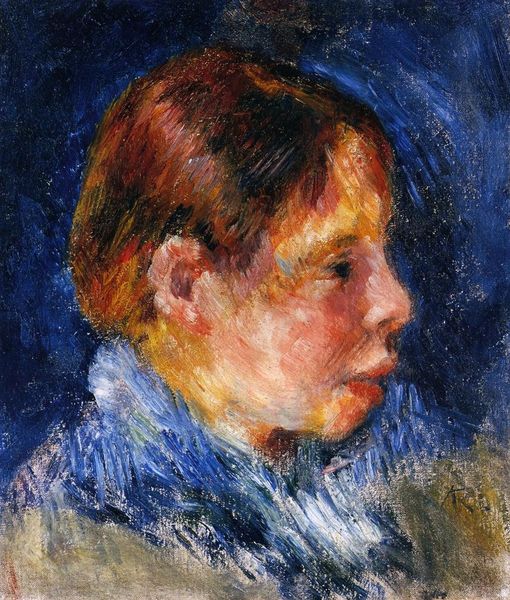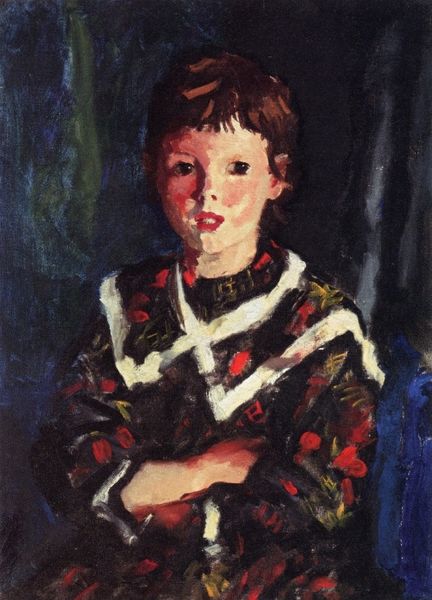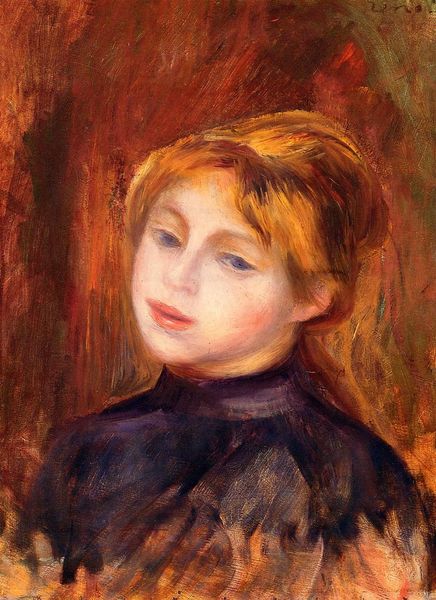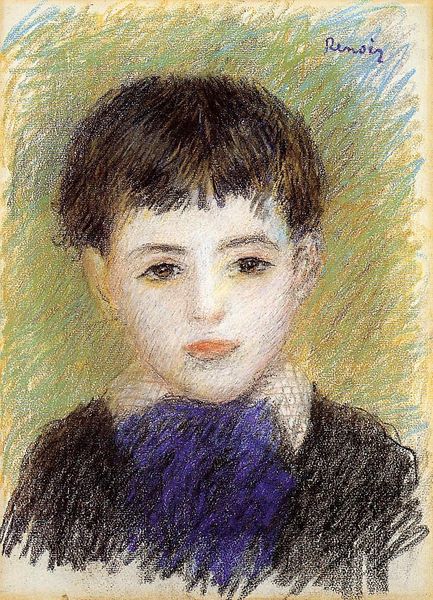
painting, oil-paint
#
portrait
#
painting
#
impressionism
#
oil-paint
#
figuration
#
oil painting
#
realism
Copyright: Public domain
Editor: This is Claude Monet's "Portrait of Michael with Hat and Pom Pom" from 1880, done in oil paint. It's a very simple portrait, almost austere, but the splash of red in the clothing really makes it pop. What strikes you about this piece? Curator: I find the hat particularly compelling, almost like a symbolic crown. Consider the use of the colour red – a very loaded colour, frequently associated with passion and importance. Could this child be heir apparent? Monet, I feel, is not just painting a child but is suggesting something more profound about status. What is the hat signifying, and how does it relate to notions of childhood and identity? Editor: That's fascinating. I hadn’t considered the hat as a status symbol. But the pom-pom seems playful, which undermines a very serious reading. Curator: Indeed. The pom-pom complicates the imagery. What does 'playful' signify in a portrait meant to fix a moment in time? Is it a clue? Think of the vanitas tradition, and how even something seemingly inconsequential can function as a poignant reminder of innocence, time, and change. What kind of narrative would you write incorporating those thoughts? Editor: So, perhaps it's about fleeting childhood innocence versus the more permanent and structured identity society imposes? The pom-pom is almost a stand-in for all those intangible aspects of childhood, and is very fragile. Curator: Exactly. The beauty is, it might not be a definitive “this means that.” Rather, it creates a resonant visual chord that still speaks to us now. I feel more informed and contemplative regarding identity than I did before we examined Monet’s visual symbolism. Editor: I concur; looking at those cultural implications really made me see much more in it.
Comments
No comments
Be the first to comment and join the conversation on the ultimate creative platform.

